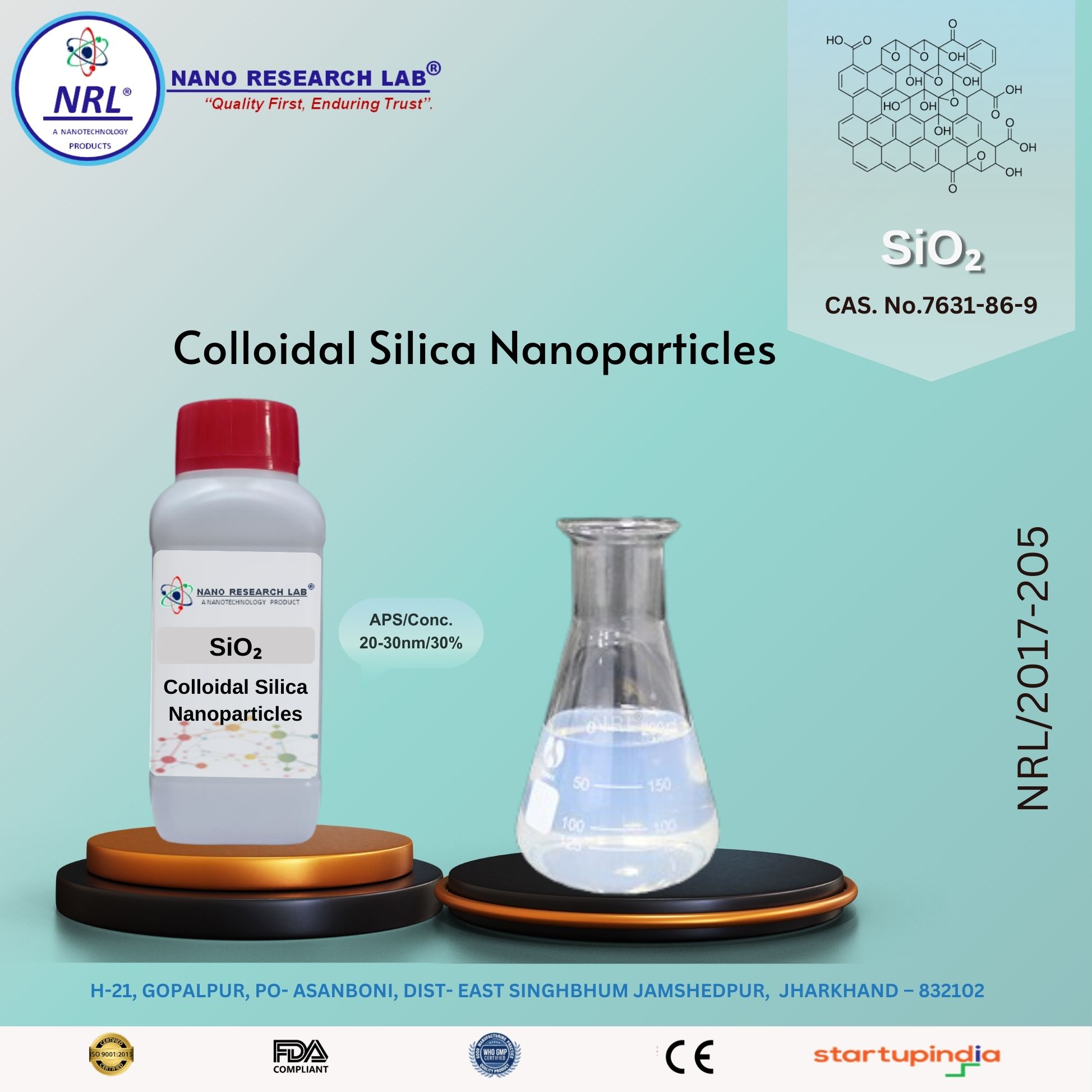
Colloidal Silica Nanoparticles (SiO₂, 20–30 nm, 30 % w/w)
₹2714.00
🧪 Colloidal Silica Nanoparticles (SiO₂, 20–30 nm, 30 % w/w)
⚙️ Technical Specifications
Property | Specification |
|---|---|
Material Name | Colloidal Silica Nanoparticles |
Chemical Formula | SiO₂ |
Purity | >99% |
Particle Size | 20–30 nm |
Concentration | 30 % w/w aqueous dispersion |
Appearance / Color | Transparent to slightly opalescent colloidal solution |
Solvent | Deionized water |
pH | 9–10 (typical, can be adjusted) |
Surface Charge (Zeta Potential) | Typically -40 to -50 mV |
Stability | Stable for 12–18 months under proper storage |
CAS Number | 7631-86-9 |
Storage Conditions | Store in sealed container at room temperature; avoid freezing and direct sunlight |
🌟 Key Features
High-purity silica nanoparticles (20–30 nm)
Stable 30 % aqueous colloidal dispersion
Uniform particle size for reproducible results
High surface area and hydroxyl-rich surface
Excellent chemical and thermal stability
Good dispersibility in water and polar solvents
Versatile for industrial, research, and biomedical applications
🔬 Applications
1. Coatings & Adhesives
Used in paints, coatings, and adhesives to improve mechanical strength and scratch resistance
2. Polymers & Composites
Incorporated into polymers and composites for reinforcement, thermal stability, and optical clarity
3. Catalysis
Acts as support material for catalysts and catalytic reactions
4. Electronics & Semiconductor
Applied in dielectric layers, polishing slurries, and electronic components
5. Research & Nanotechnology
Ideal for nanomaterial synthesis, surface functionalization, and experimental studies
6. Cosmetics & Personal Care
Used in skin care products, toothpaste, and cosmetics for texture and stability enhancement
⚠️ Handling & Storage
Store in a sealed container at room temperature, avoiding freezing and direct sunlight
Shake gently before use to ensure uniform dispersion
Handle with gloves, protective eyewear, and lab coat
Use in well-ventilated areas
Avoid contact with strong acids or bases that may destabilize the dispersion
